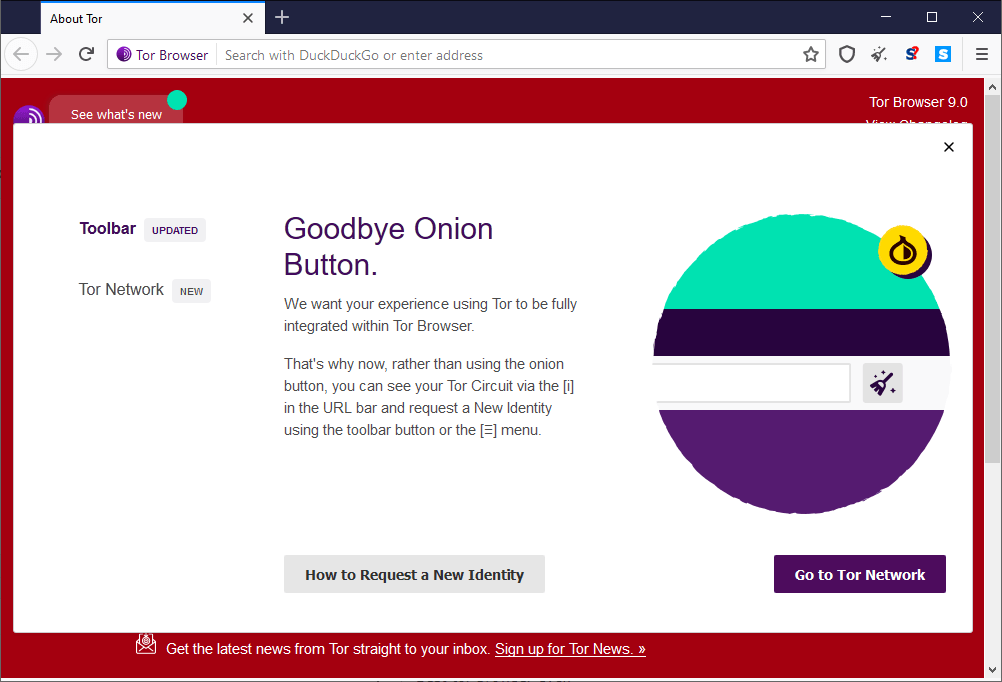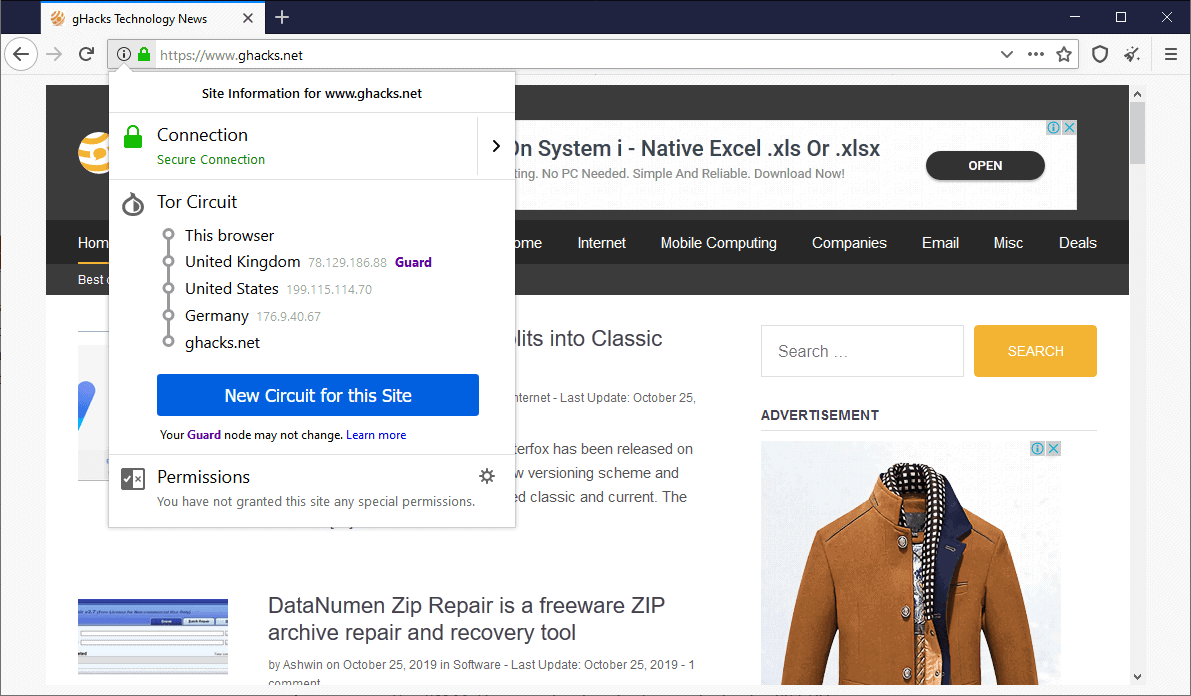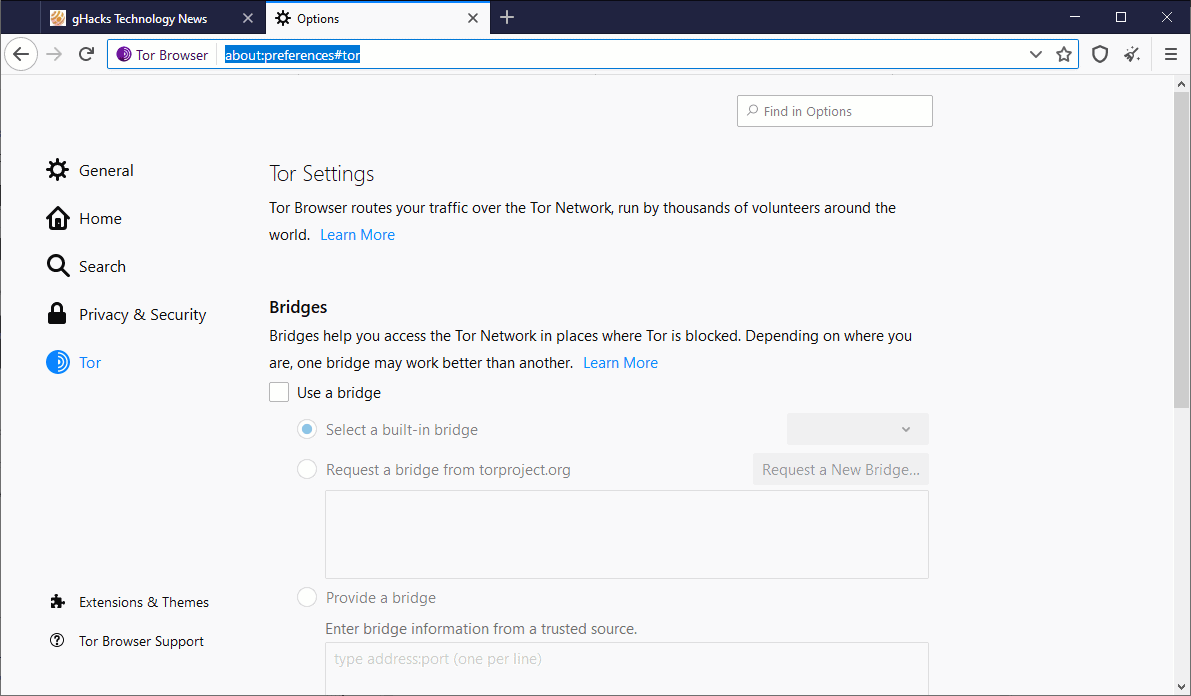by Martin Brinkmann on October 25, 2019 in Internet –
4 comments
Tor Browser 9.0 has been released this week; it is the first version of Tor Browser that is based on Firefox 68 ESR (opposed to Firefox 60.x which previous versions of Tor Browser were based on).
The new version of Tor Browser is already available for download on the official project website at Tor Project. The browser is available for Windows, Linux and Macintosh computer systems as well as Android devices.
Existing users may update Tor Browser automatically or manually. A click on Menu > Help > About Tor Browser runs a manual check for updates within the browser’s interface.
Tor Browser 9.0 loads the default New Tab Page on first start. There you find the “See what’s new” link to display information about major changes in the new browser version.

The Onion Button is no longer available in Tor Browser 9.0. The team wanted to integrated Tor fully into the browser and added Tor Circuit information to the browser’s i-icon in the URL bar.
A click on the icon displays the usual connection and permissions settings known from the Firefox web browser and Tor Circuit information that provides connection information.

There is also a new toolbar button called New Identity that allows users to reset the identity (which requires the restarting of the Tor browser). The feature is now easily accessible from within the Tor Browser interface.
The team has integrated Tor settings into the browser’s preferences. Tor users may load about:preferences#tor directly in the browser’s address bar to open the settings or go to Menu > Options > Tor manually.

Options to configure Bridges, proxy settings, and allowed ports are configurable on the page. All it takes is to check the main box to enable a preference and use the fields and menus to configure it. If the firewall is very restrictive, you may configure the browser to use ports 80 and 443 exclusively for connections as these are the most likely ports that are not blocked by the firewall.
The browser window is configured to use letterboxing by default. The technique adds white margins to the browser’s frame to let users resize the browser window while still prevent fingerprinting using screen dimensions.
Tor users who dislike the feature can turn it off in the following way:
- Load privacy.resistFingerprinting.letterboxing in the browser’s address bar.
- Set the preference to False.
Tor Browser 9.0 comes with support for two additional languages, Macedonian and Romanian, which brings the total number of supported languages to 32.
Interested users find the full changelog on the official Tor Project website.